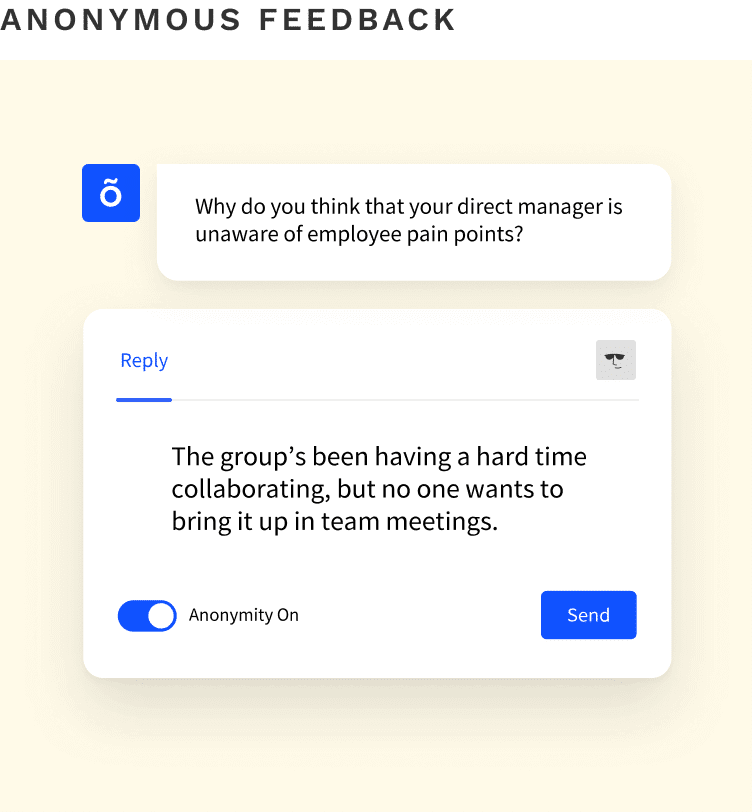Today’s modern workforce — one in the throes of crisis and change — thrives under the guidance of mindful leadership.
Mindfulness may have come from personal practices like meditation, though its benefits at a place of business are increasingly popular and useful. What’s more, the definition of workplace is undergoing some shifts. Nowadays more companies are relying on work-from-home teams and distributed workforces. This proves that being productive, creative, and motivated is not dependent on a “professional” setting. Rather, it starts with a certain mindset or headspace. Mindfulness opens the door to that better space. But it’s a leadership presence that embraces mindfulness that is the key.
What is mindfulness at work?
Mindfulness at work is about being present, intentional, open-minded, and capable of managing your stress. As a mindful leader, here’s what you need to understand. Your employees want to give you their best productive and creative energies. For this, they need a somewhat stress-free environment lead by a manager with a steady hand. You can create that in how you relate to your team.
Here's what mindfulness at work and in leadership looks like:
- Whenever you are interacting with an employee, be as open-minded as possible as you process the experience. Think before reacting, listen before speaking, and assume positive intent.
- When an employee is showing you their work or walking you through their thinking, withhold judgment until they’ve had the chance to explain everything. Then, ask questions before commenting to be sure you get a full picture.
- When a mistake gets made or a plan goes off track, don’t focus so much on what went wrong. Focus instead on learning from mistakes, and use these lessons to refocus your planning from that point onward.
Stop fixating on future results alone
It’s all about being in the present moment. This is the part of mindfulness that comes from meditation, but it speaks well to leadership built on mindfulness and compassion. “Rather than being solely outcome-focused, these leaders are focused on the present moment.” The end goal still matters, but being aware of the many moments that affect the outcome is where mindfulness comes into play. In other words, take every moment as a fresh starting point or learning opportunity, and you’ll have a clearer mind to plan for the future, to see the forest beyond the trees.
And on top of all that, a mindful manager or leader who doesn’t harp on the past, nor obsess over results creates that positive environment where employees thrive.
It’s not that results don’t matter. But having pure tunnel vision towards future results keeps you away from the present moment. And it’s in this moment where your employees are happiest and, most importantly, at their most productive. This is leadership through respect and reciprocity, not command and control.

How to harness the benefits of mindfulness at work
1. Ditch stress to boost productivity
When you can manage your own stress levels with mindfulness techniques, you inadvertently help the team manage theirs by following your lead. With stress in check, you'll see greater focus and productivity, resulting in fewer mistakes and overall happier teams. When people make fewer mistakes, they’re more confident, which encourages them to bring out new ideas and approaches to constantly boost their workflows and improve efficiency.
2. Banish information overload and plan better
Not easy right? Our minds tend to travel a mile a minute. We are over-stimulated creatures. One Slack message can trigger a reminder of an email that needs answering and that email made you recall a point to add to your to-do list, which prompts you to open your calendar and book another meeting, and oh look, you have four new meeting invites, it's time to look at the agendas and add more to your to-do list. We need to train our brains to avoid this.
As a manager, you’ve got a lot on your plate. There’s a lot of information you need to keep top of mind. You’ve got many tasks to do, or delegate and monitor. Practicing mindfulness, even trying meditation, calms the flow of information overload. This lets you see things more clearly and allows you to be more intentional in what projects you choose to focus on. It gives you a clearer view of your priorities and the size and scope of each task ahead. “As we become more present in our lives and in relation to others, it can help us to make better decisions.” This is how a mindful leader becomes a mindful planner.
3. Keep an open mind to boost development
Finally, a mindful workplace is a kinder, more open environment. And that’s not just great for feeling good. Closed-mindedness and intimidating hierarchy stifle innovation. When people like working with each other, they’re more eager to share what they know, or ask questions about what they don’t know. It becomes a learning environment where people are eager to grow professionally.
Unmindful workplaces:
- High stress environment
- Information overload
- Closed-minded & hierarchical workplace
- Regular repeated mistakes
- Stuck in routine ways
- Competitive workplace relations
- Hitting productivity ceilings
Mindful workplaces:
- High confidence environment
- Mindful planning
- Growth-mindset & learning workforce
- Fewer mistakes & rarely repeated
- Creative & innovative
- Cooperative workplace relations
- Finding new productivity peaks
Check out these initiatives in mindfulness at some of the biggest companies in the world. Google created the Search Inside Yourself Learning Institute (SIYLI). Intel’s been doing it since 2012. And it’s not just tech firms. Food manufacturing giant General Mills practices and tracks mindfulness at work.
How do you promote mindfulness on your team?
The key to nurturing mindful teams is to lead by example. If you want a mindful team, work on your own mindfulness first.
1. Manage your own distractions and discourage multitasking
It can start by catching yourself in the never-ending cycle of distraction and multitasking that most of us experience today. We are over-stimulated creatures and this does not come in handy for productivity or mental clarity.
One Slack message can trigger a reminder of an email that needs answering and that email made you recall a point to add to your to-do list, which prompts you to open your calendar and book another meeting... Catch yourself. Be aware. If you can start by helping yourself here, you can build up mindfulness from the ground up and then help your team master theirs.
2. Think before reacting and pay attention to your own behaviour
Promoting mindfulness all around also means paying attention to your behavior and reactions, working habits, overall stress level, and how you choose to handle it. Did someone say something to upset you? Before shooting a reply, think. Ask yourself what you think their intentions were. Ask yourself what is the most productive way to answer this. Take your time. When you model this mindful behavior, it will be easier to nurture it in others.
3. Take time to reset between meetings and big moments
Try taking a walk in between meetings or before difficult conversations to center yourself. This kind of mindfulness training is good for the whole team.
The main idea is to discuss the importance of taking the time to recalibrate. Especially these days, when your team might be on endless Zoom calls, encourage them to get up, take a walk, and change the scenery in between meetings. You can also try starting each meeting with a check-in to see how everyone is feeling, or take two minutes of 'quiet time' before getting started to let people get into the present moment.
💡 Tip: Your phone can be a source of distraction and stress. Turning off phone notifications while engaging in your task at hand is wise. The same thing goes for emails. Don’t see to each new email as it flies into the inbox. Rather, make checking and responding to emails a designated task with a set time to do it.
Finally, know that mindfulness isn’t about a zen-like state that dissolves all stress. It’s natural for there to be some distraction and stress at any workplace. Mindfulness techniques at work can help you find the sources of these issues, and give you the patience to confront it in a more productive way.
How to build mindfulness as a leader

Communication and listening: The way you express mindfulness as a leader is through communication. Open communication is key. When you’re speaking with an employee or your team, really focus on listening to them completely before even beginning to think about how you are going to respond.
Have a beginner's mindset: Whenever you get the chance, try to learn something from one of your team members. At times, even when you think you do know something, it’s good to understand how someone else might teach and explain it in their own way.
Let go of ego: In the end it’s a matter of leadership presence that adopts humility. You might be the team leader, but you don’t have to embody a boss mindset where you know more than anyone and are better at doing everything. Know your limitations and don’t be guarded about them. Try exercising emotional intelligence, which isn’t about better or worse, but better together.
💡Actionable tips
- When you’re holding meetings, don’t allow phones or laptops or any other gadgets. Have one person be the designated note-taker who shares the notes afterwards.
- When you’re interacting with an employee you think you know, try to focus on learning something new about them. Maybe there’s a new skill in there you can nurture.
- While group meditation exercises are a good idea, they shouldn’t be mandatory. Some people might not feel comfortable. Let people decide their own level of engagement.
- Maybe some of your employees are already into mindfulness training. Ask them to be mindful reps to help others. They could even lead sessions.
- Plan your day so that when you meet with employees, you’re sure you’ve got nothing else to do. Let them know the times that are always open to chat, so you can give them your open-minded attention.
- Extra work-from-home tip: Have your team take turns sharing what helps them center themselves, whether it be a meditation app they use, a productive means to structure their daily tasks, or how they have been managing stress.
Tracking mindfulness in the workplace with Officevibe

You’ll want to monitor the levels and frequency of deliberate mindfulness techniques put into place at work. See what’s helping and what isn’t; awareness is key. While the well-being of everyone on your team is the primary goal, you do want to keep the pulse on how to best boost productivity.
Officevibe is a trust-building platform used by over 50K managers around the globe that allows employees to give feedback on whether they’re feeling confident, stress-free, and satisfied in their day-to-day. It’s a great way to gauge how effective and mindful your leadership is.
The mindful workforce of tomorrow
In these times of increasing work-from-home arrangements and other potentially stressful social adjusting, it could be harder for a leader to forge a positive connection to the team. By being a mindful leader, you can help your team learn how to focus, to manage stress and banish distraction, thereby making any space a calm, focused productive space for working.
As for the work relationships, they will experience strain in these times. Having a mindful attitude and practicing mindful leadership will help overcome some of these spatial distances by demonstrating to your team you care about their well-being.
Equip HR and managers with tools to engage, recognize, and drive performance.




